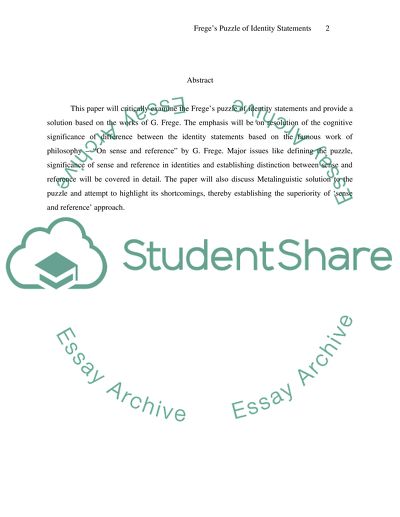Cite this document
(“Freges Puzzle of Identity Statements Essay Example | Topics and Well Written Essays - 1500 words”, n.d.)
Retrieved from https://studentshare.org/miscellaneous/1499806-freges-puzzle-of-identity-statements
Retrieved from https://studentshare.org/miscellaneous/1499806-freges-puzzle-of-identity-statements
(Freges Puzzle of Identity Statements Essay Example | Topics and Well Written Essays - 1500 Words)
https://studentshare.org/miscellaneous/1499806-freges-puzzle-of-identity-statements.
https://studentshare.org/miscellaneous/1499806-freges-puzzle-of-identity-statements.
“Freges Puzzle of Identity Statements Essay Example | Topics and Well Written Essays - 1500 Words”, n.d. https://studentshare.org/miscellaneous/1499806-freges-puzzle-of-identity-statements.


